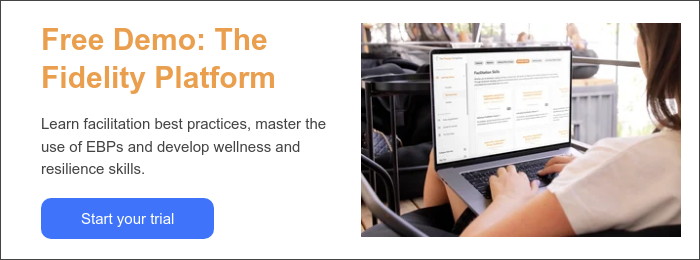Introducing Interactive Journaling® to Participants

Interactive Journals provide an evidence-based method you can use to engage, inform and inspire participants. Designed to help people make lasting changes, each Journal emphasizes real-life application, encouraging participants to ask, “What does this mean to me?” and “How can I apply this to my life today?
When introducing Journals to participants, the way you present a program matters. The value participants place on their Journals will greatly depend upon the level of interest, importance and emphasis that you show. If you introduce the Journals as interesting, important and useful, your attitude will be contagious! This is true throughout your time together. For example, if you give participants an assignment to complete in their Journal, always ask about and review how it went early in your next meeting. Neglecting to do so implies that the assignment was not very important. Emphasize Journal assignments as positive opportunities. Never use Interactive Journaling® or related out-of-session assignments as a form of punishment.
Here is an example of how you might introduce the Journal:
This is your personal Interactive Journal to use in our work together, and it is yours to keep. It is designed to help you apply what we discuss here in your own life. New material is presented in small chunks and then you are asked to respond and apply the material to your own situation. With every page, you will be challenged to ask yourself “What does this mean to me?” and “How can I apply this in my life today?” We will work on some of the pages here together, and you will be expected to complete others on your own in-between group meetings. The work you do in your Journal is meant to help you make changes you want to make and stick with them over the months and years ahead.
Preparing Your Own Introduction
There can be some anxiety when using Interactive Journaling® for the first time, or for the first time with a new group of participants. Developing and practicing a way to introduce the curriculum and the Interactive Journaling® process may help you feel more comfortable in your initial interactions with participants. You may find it helpful to prepare positive statements based on the six themes below. Feel free to use your own language to express these ideas.
Alliance
You may find it helpful to clarify your role as facilitator at the start of a program. This clarification can help build the therapeutic alliance by reminding participants you are walking alongside them.
Example: “As a facilitator, I have two jobs. One is to uphold the conditions of the court, and the other is to work with you on your journey of behavior change.”
Self-efficacy
Participants’ own belief that they are capable of making change and deserving of their accomplishments is essential to the behavior change process. Consider sharing the statement below and encouraging statements of self-efficacy used by participants throughout the program.
Example: “You are capable and deserving of a better future. The evidence-based Interactive Journals will work with you and for you.”
Self-change
All real change is self-change, and it requires internal motivation. Consider reminding participants that it is not easy, but it is rewarding.
Example: “Positive change is an inside job. You will get out of this program what you put into it.”
Value
You may have participants who are hesitant or don’t initially see the value in the journaling process. Encourage them to complete the pages and activities of the program to the best of their ability to find success.
Example: “It is essential that you’re engaged and fully participate in the program to gain all that you can from it. The value of this program is that changing your behavior frees you to make your life better and more rewarding.”
Hope
The belief that change is beneficial and possible is key to positive participant results.
Example: “This program is a program of hope. You can live a more positive life. This program helps you answer the questions: Where am I? Where do I want to go? How do I get there?”
Confidentiality
Another point that can benefit the therapeutic alliance is to emphasize confidentiality and honesty within the group.
Example: “I am a facilitator and mandatory reporter, but nothing in your Journals is meant to incriminate you. You need to feel safe to be open and honest in your responses.”
While introducing any new program to participants can be a challenge, you are capable of creating a safe, rewarding and successful program environment. As your partner in behavior change, we at The Change Companies are here not only to help participants, but also to walk alongside facilitators to ease your responsibilities as much as possible.

